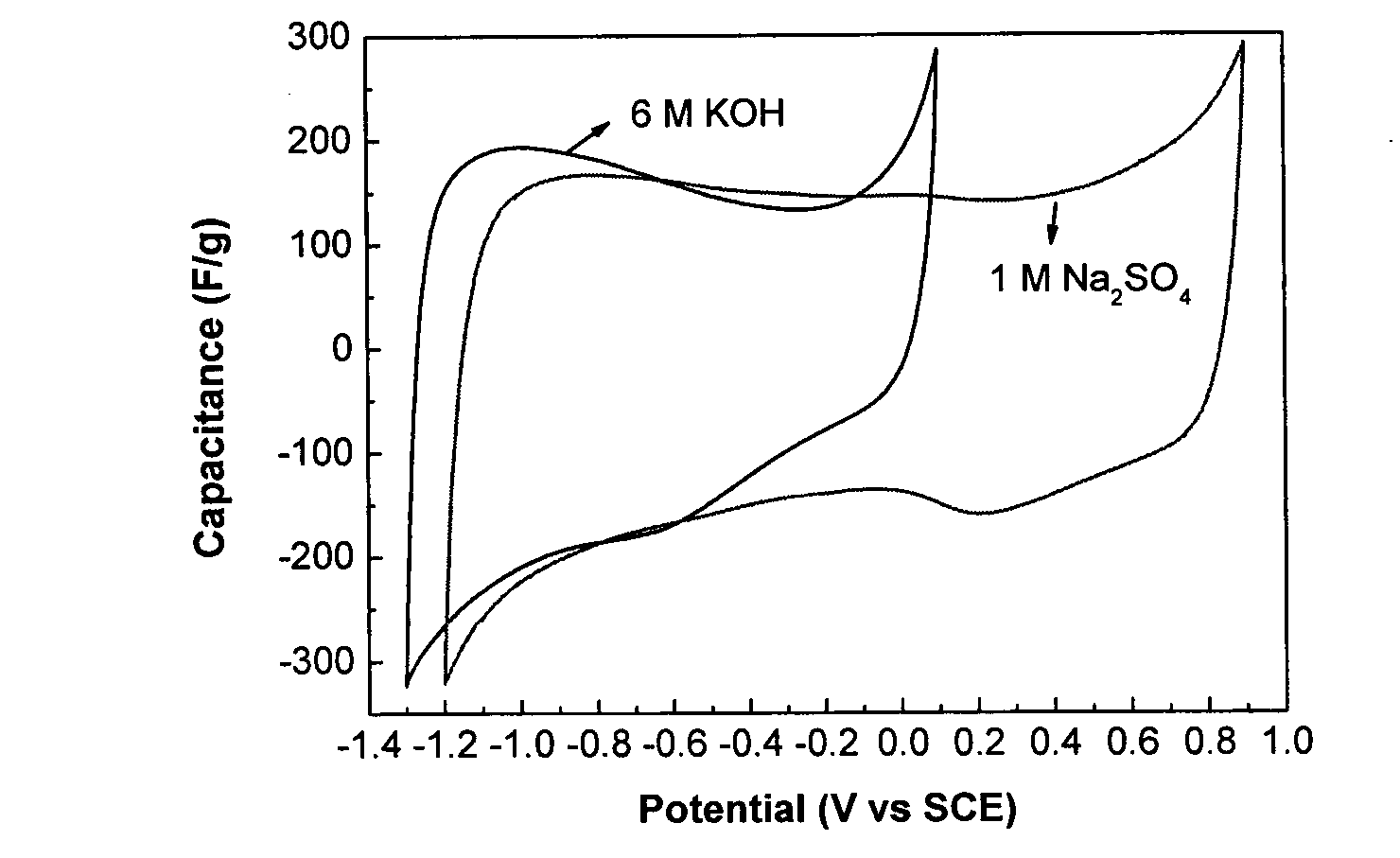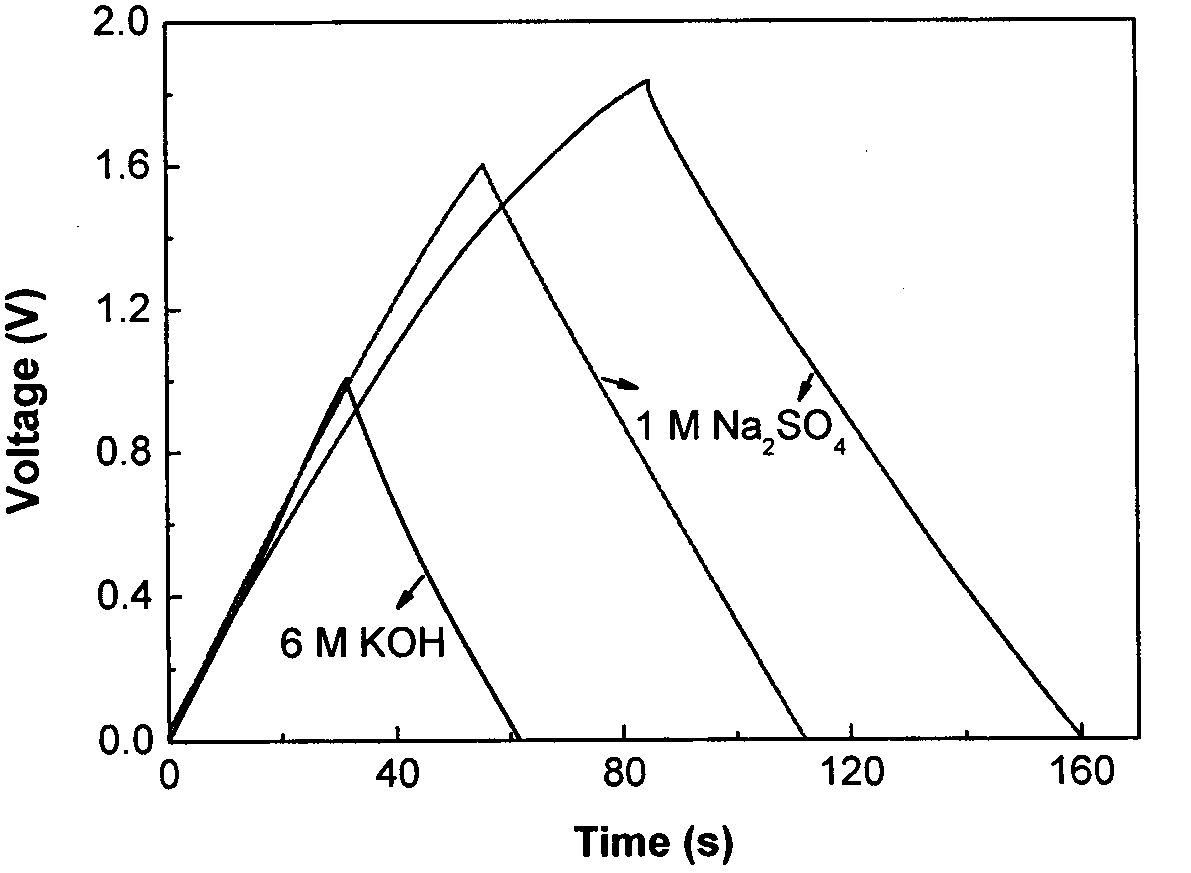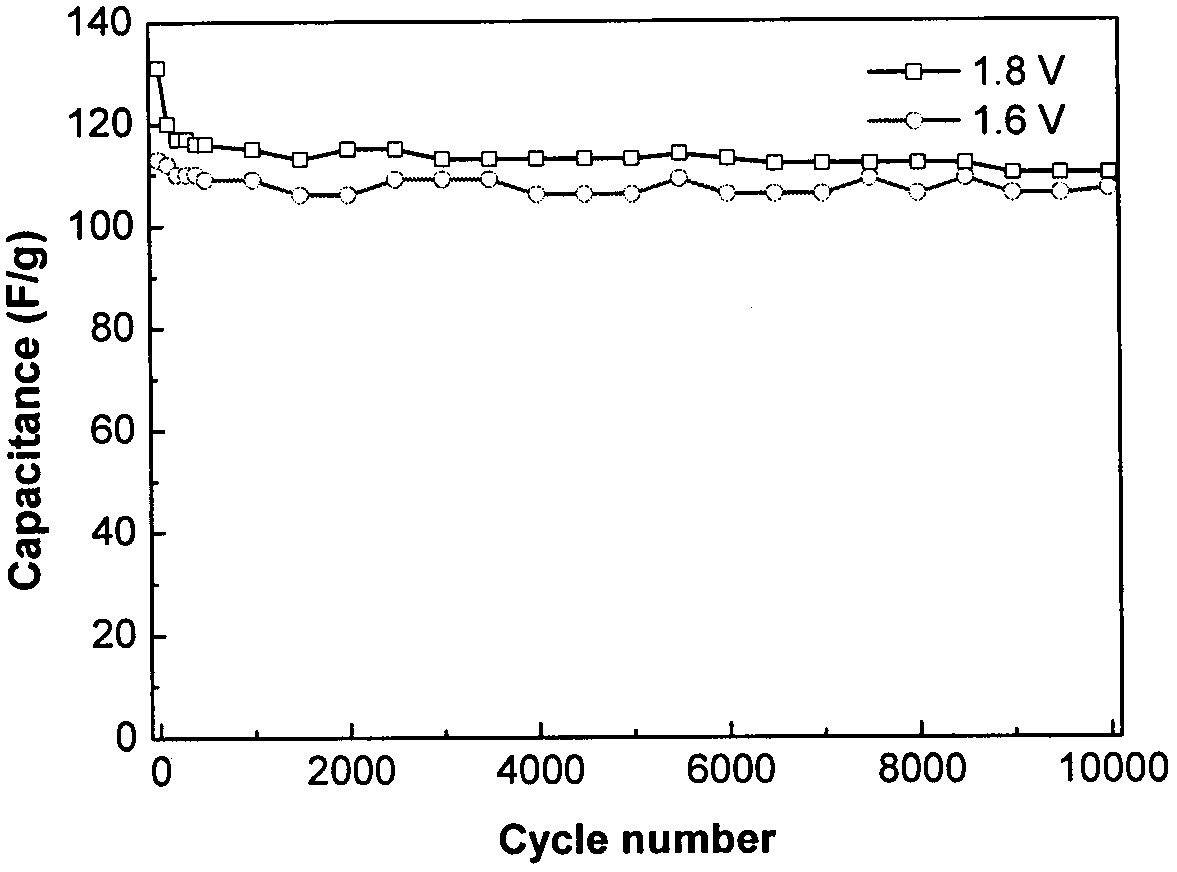Water system symmetrical electrochemical capacitor based on rice husk porous carbon
A porous carbon and symmetrical technology, applied in the field of electrochemistry, can solve the problems of toxicity, harsh environmental requirements, high cost, etc., and achieve the effect of simple operation, low price, and increased energy density
- Summary
- Abstract
- Description
- Claims
- Application Information
AI Technical Summary
Problems solved by technology
Method used
Image
Examples
Embodiment 1
[0016] The rice husk-based porous carbon, acetylene black and PTFE were evenly mixed in a mass ratio of 85:10:5, rolled into sheets, and pressed on foamed nickel to make capacitor electrodes with an electrode area of 1 cm 2 . A three-electrode system was adopted, the saturated calomel electrode (SCE) was used as the reference electrode, the Pt sheet was used as the auxiliary electrode, and the electrolytes were 6M KOH and 1M Na 2 SO 4 Aqueous solution, using PARSTAT 2273 electrochemical workstation to complete the test at 25 °C. The obtained cyclic voltammogram is shown in figure 1 As shown, at 1MNa 2 SO 4 In aqueous solution, the potential window of the rice husk-based porous carbon electrode is wider than that in 6M KOH aqueous solution.
Embodiment 2
[0018] Prepare rice husk-based porous carbon electrodes according to Example 1, select two activated carbon electrodes with equal mass as the positive and negative electrodes, assemble the positive electrode sheet, diaphragm, and negative electrode sheet into a compact structure, inject electrolyte, lead out the positive and negative electrode leads, and seal. 6M KOH aqueous solution and 1M Na 2 SO 4 The aqueous solution was used as the electrolyte, and assembled into an aqueous symmetric electrochemical capacitor, and its electrochemical performance was tested at 25°C using a PARSTAT 2273 electrochemical workstation. Charge and discharge performance such as figure 2 The energy density and power density of the assembled electrochemical capacitors under different charge and discharge currents are shown in Table 1. Using 1M Na 2 SO 4 The aqueous solution is an electrolyte, although the mass specific capacitance of the activated carbon is lost, but the energy density of the ...
PUM
 Login to View More
Login to View More Abstract
Description
Claims
Application Information
 Login to View More
Login to View More - R&D
- Intellectual Property
- Life Sciences
- Materials
- Tech Scout
- Unparalleled Data Quality
- Higher Quality Content
- 60% Fewer Hallucinations
Browse by: Latest US Patents, China's latest patents, Technical Efficacy Thesaurus, Application Domain, Technology Topic, Popular Technical Reports.
© 2025 PatSnap. All rights reserved.Legal|Privacy policy|Modern Slavery Act Transparency Statement|Sitemap|About US| Contact US: help@patsnap.com



